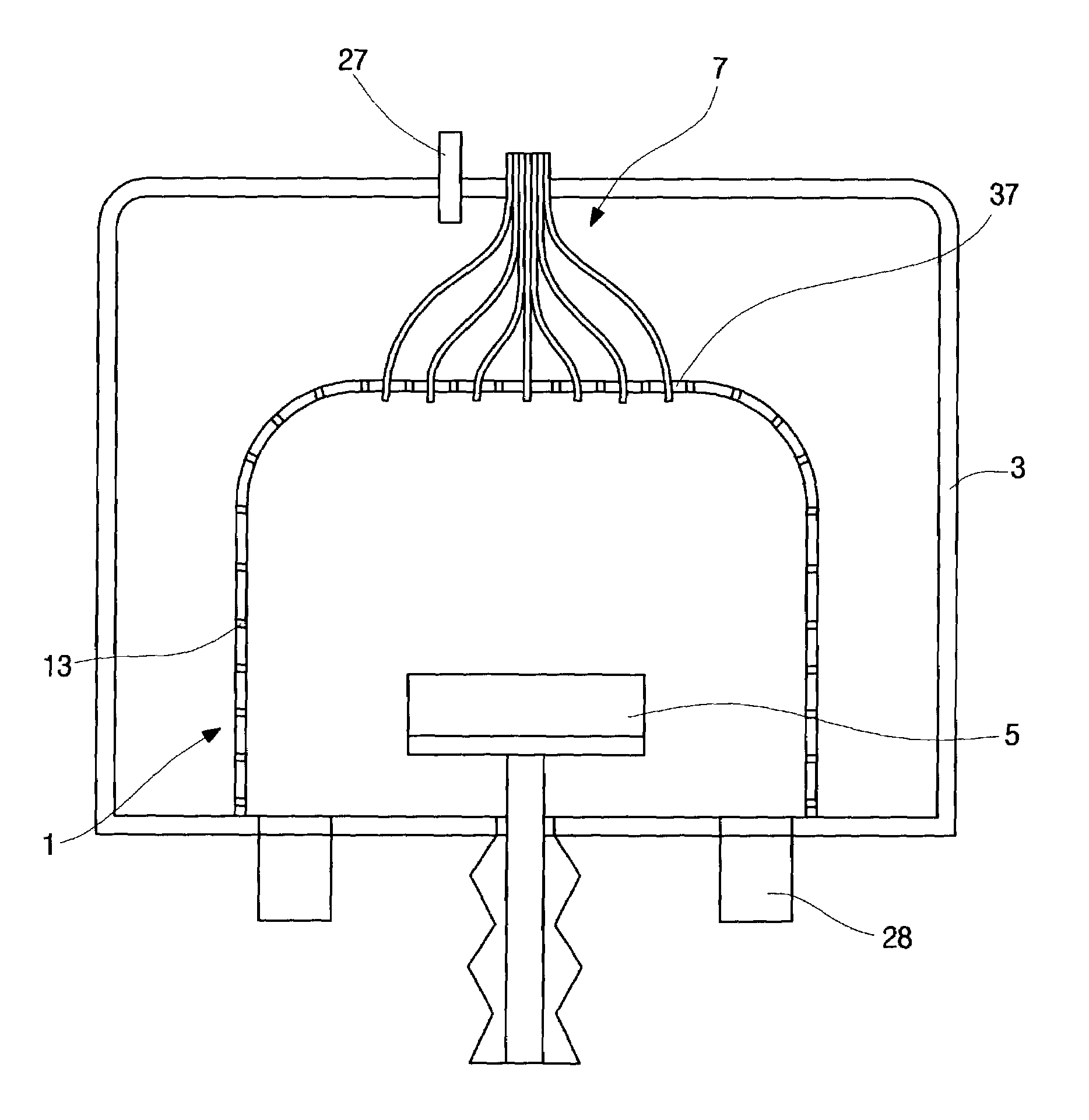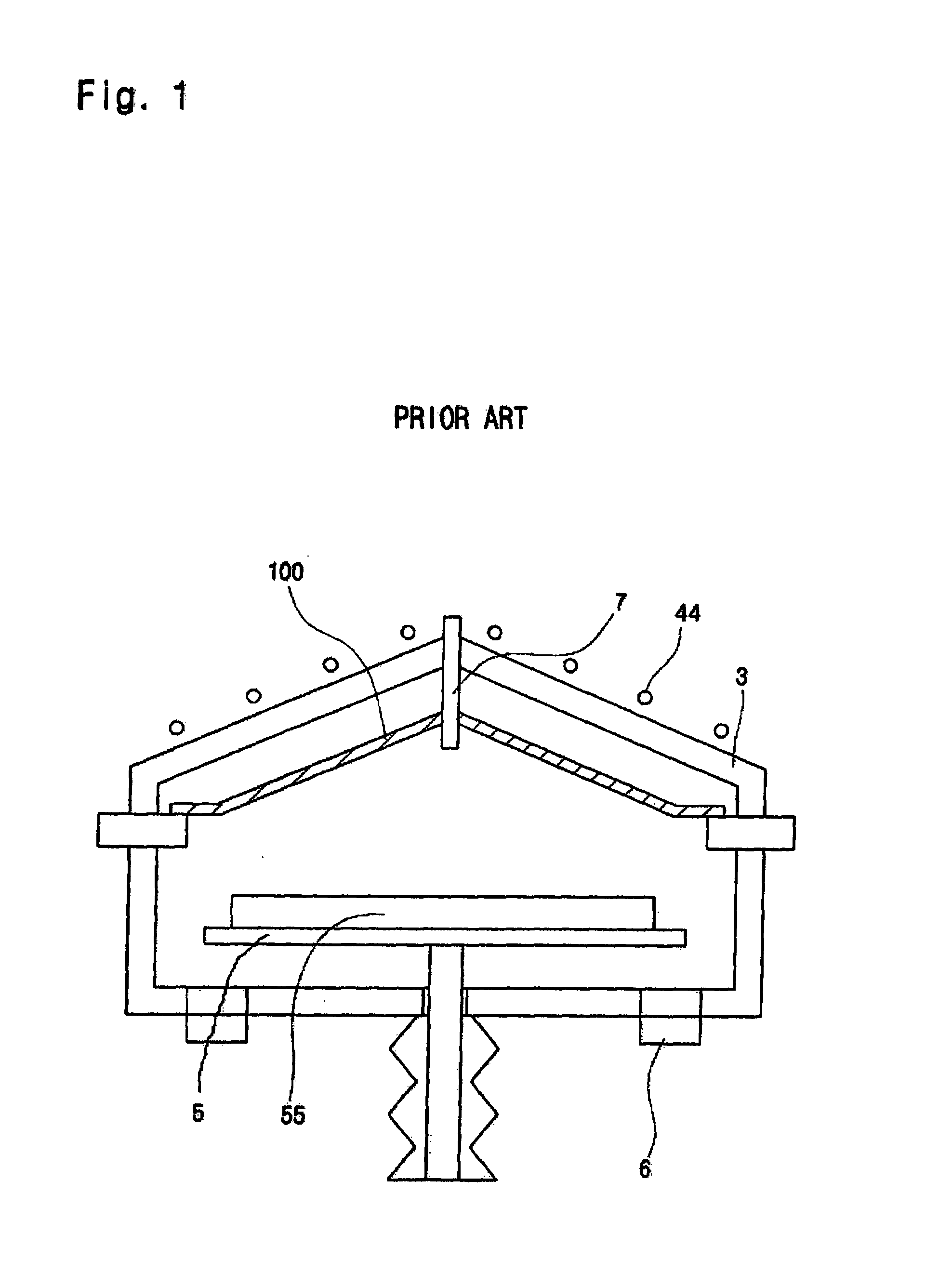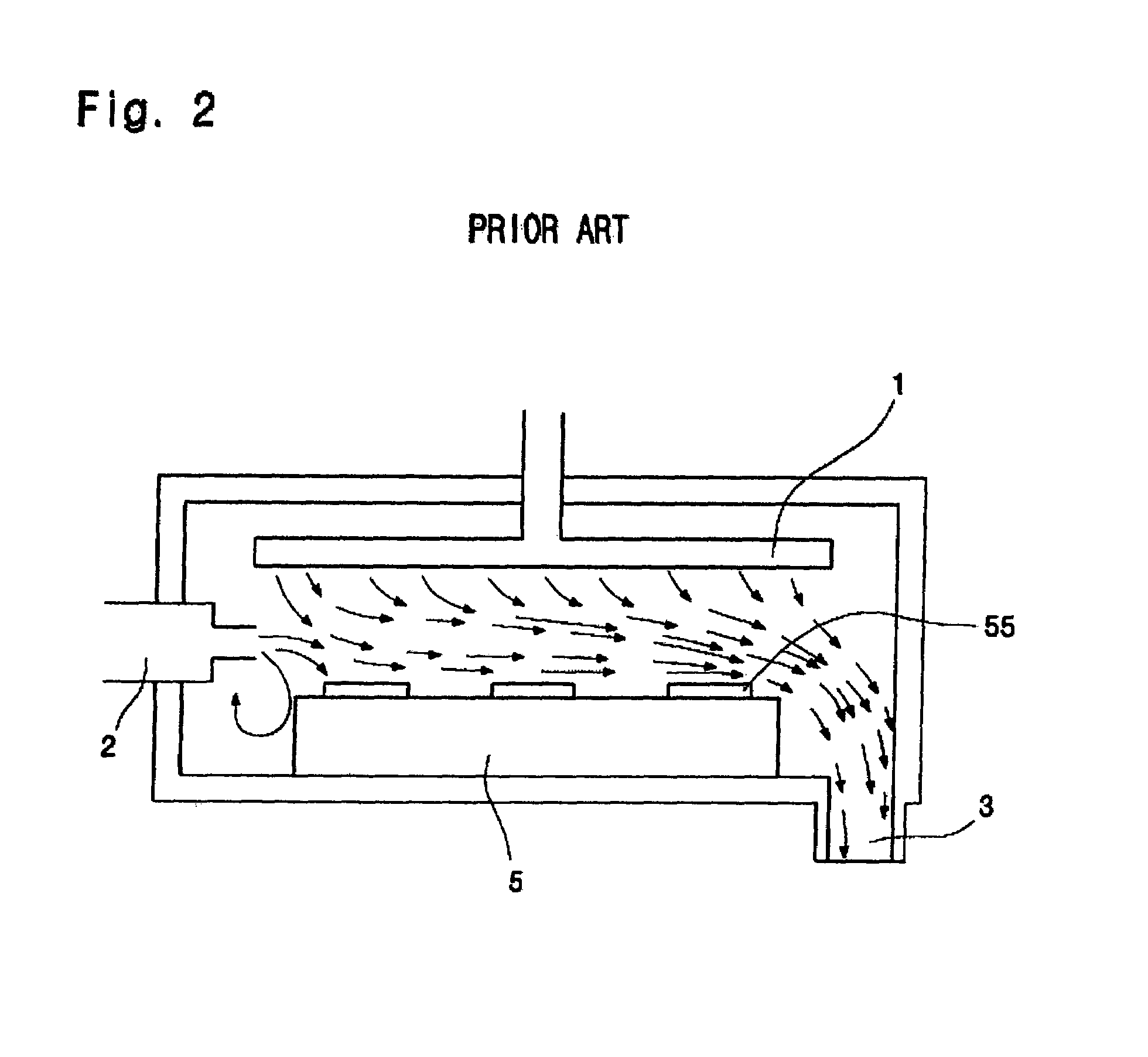Method and apparatus for chemical vapor deposition capable of preventing contamination and enhancing film growth rate
a technology of chemical vapor deposition and film growth rate, which is applied in the field of method and apparatus for chemical vapor deposition (cvd), can solve the problems of contaminating thin films while manufacturing, affecting the reliability of the manufacturing process, and generating undesired films or powders in the reaction chamber, etc., and achieves a remarkable enhancement of the film growth rate and the density of source material
- Summary
- Abstract
- Description
- Claims
- Application Information
AI Technical Summary
Benefits of technology
Problems solved by technology
Method used
Image
Examples
example 1
Configuration of CVD Apparatus
[0064]In a preferred embodiment in accordance with the present invention, as shown in FIG. 7, the reactive gas confining means 1 having a diameter of 300 mm and a height of 445 mm was provided to surround the susceptor 5, having a diameter of 240 mm and a height of 80 mm, positioned in the midst of the reaction chamber 3. The means 1 employed has a funnel-like shape through which the purge gas is diffused to the inside of the means 1. The reactive gas supply ports 7 were equipped on the top of the means 1 and the purge gas supply port 9 provided over the means 1.
example 2
TiO2 Film Deposition
[0065]TiO2 film deposition was made using the CVD apparatus described in Example 1. Following equation denotes TiO2 film deposition by TIP pyrolysis.
Ti(OC3H7)4→TiO2(s)+4C3H6+2H2O
[0066]Titanium iso-propoxide (TIP, Ti(OC3H7)4) was employed as a precursor for TiO2 film deposition. The vapor pressure of TIP was 2 Torr at 70° C. The heating temperature of TIP was 85° C., and the reaction chamber pressure was 133 Pa. Pure TIP gas was supplied to the inside of the means 1 at a flow rate of 1×10−6 kg / sec without the aid of carrier gas, whereas Argon as purge gas was injected into the outside of the means 1 at a flow rate of 10×10−6 kg / sec. At appropriately low heating temperatures, i.e., at the range from 70° C. to 100° C., TIP can be easily vaporized but hardly decomposed in the TIP container. Pure vapor of TIP can be delivered without the aid of carrier gas into the chamber 3 where the chamber pressure is much lower than the TIP vapor pressure. Here, there is an advant...
example 3
[0067]As shown in FIG. 17, TiO2 film deposition was made at various heights of the susceptor from the bottom of the means 1 with the CVD apparatus and conditions described in Examples 1 and 2, respectively, while keeping the uniformity of the deposition within ±5% in the range less than 100 mm in radial position. It was understood that the reason why the film growth rate beyond the radial position 100 mm, i.e., the edge portion of the upper surface of the susceptor, is increased steeply is because the velocity vector is abruptly changed in this vicinity.
PUM
| Property | Measurement | Unit |
|---|---|---|
| thickness | aaaaa | aaaaa |
| diameter | aaaaa | aaaaa |
| diameter | aaaaa | aaaaa |
Abstract
Description
Claims
Application Information
 Login to View More
Login to View More - R&D
- Intellectual Property
- Life Sciences
- Materials
- Tech Scout
- Unparalleled Data Quality
- Higher Quality Content
- 60% Fewer Hallucinations
Browse by: Latest US Patents, China's latest patents, Technical Efficacy Thesaurus, Application Domain, Technology Topic, Popular Technical Reports.
© 2025 PatSnap. All rights reserved.Legal|Privacy policy|Modern Slavery Act Transparency Statement|Sitemap|About US| Contact US: help@patsnap.com



